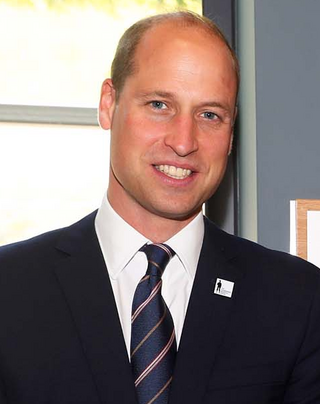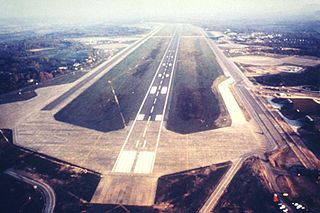Related Research Articles

The City of London, widely referred to simply as the City, is a city, ceremonial county and local government district that contains the ancient centre, and constitutes, alongside Canary Wharf, the primary central business district (CBD) of London and one of the leading financial centres of the world. It constituted most of London from its settlement by the Romans in the 1st century AD to the Middle Ages, but the modern area referred to as London has since grown far beyond the City of London boundary. The City is now only a small part of the metropolis of Greater London, though it remains a notable part of central London. The City of London is not one of the London boroughs, a status reserved for the other 32 districts. It is also a separate ceremonial county, being an enclave surrounded by Greater London, and is the smallest ceremonial county in England.

London is the capital and largest city of England, and the United Kingdom, with a population of around 8.8 million, and the largest city in Western Europe by metropolitan area, with a population of 14.8 million. It stands on the River Thames in south-east England at the head of a 50-mile (80 km) estuary down to the North Sea and has been a major settlement for nearly two millennia. The City of London, its ancient core and financial centre, was founded by the Romans as Londinium and retains its medieval boundaries. The City of Westminster, to the west of the City of London, has for centuries hosted the national government and parliament. Since the 19th century, the name "London" also refers to the metropolis around this core, historically split among the counties of Middlesex, Essex, Surrey, Kent, and Hertfordshire, which since 1965 has largely comprised Greater London, which is governed by 33 local authorities and the Greater London Authority.

The Royal County of Berkshire, commonly known as simply Berkshire, is a ceremonial county in South East England. It is bordered by Oxfordshire to the north, Buckinghamshire to the north-east, Greater London to the east, Surrey to the south-east, Hampshire to the south, and Wiltshire to the west. Reading is the largest settlement and the county town.

William, Prince of Wales, is the heir apparent to the British throne. He is the elder son of King Charles III and Diana, Princess of Wales.

Newbury is a market town in West Berkshire, England, in the valley of the River Kennet. It is 26 miles (42 km) south of Oxford, 25 miles (40 km) north of Winchester, 27 miles (43 km) southeast of Swindon and 20 miles (32 km) west of Reading. It is also where West Berkshire Council is headquartered.

The Barbican Estate, or Barbican, is a residential complex of around 2,000 flats, maisonettes, and houses in central London, England, within the City of London. It is in an area once devastated by World War II bombings and densely populated by financial institutions, 1.4 miles (2.2 km) north east of Charing Cross. Originally built as rental housing for middle and upper-middle-class professionals, it remains an upmarket residential estate. It contains, or is adjacent to, the Barbican Arts Centre, the Museum of London, the Guildhall School of Music and Drama, the Barbican public library, the City of London School for Girls and a YMCA, forming the Barbican Complex.

Hyde Park is a 350 acres (140 ha), historic Grade I-listed urban park in Westminster, Greater London. A Royal Park, it is the largest of the parks and green spaces that form a chain from Kensington Palace through Kensington Gardens and Hyde Park, via Hyde Park Corner and Green Park, past Buckingham Palace to St James's Park. Hyde Park is divided by the Serpentine and the Long Water lakes.

Barbican is a London Underground station situated near the Barbican Estate, on the edge of the ward of Farringdon Within, in the City of London in Central London. It has been known by various names since its opening in 1865, mostly in reference to the neighbouring ward of Aldersgate.
Aldersgate is a Ward of the City of London, England, named after one of the northern gates in the London Wall which once enclosed the City.

Unexploded ordnance, unexploded bombs (UXBs), and explosive remnants of war are explosive weapons that did not explode when they were employed and still pose a risk of detonation, sometimes many decades after they were used or discarded. When unwanted munitions are found, they are sometimes destroyed in controlled explosions, but accidental detonation of even very old explosives also occurs, sometimes with fatal results. A dud is an unexploded projectile fired in anger against an enemy, but which has failed to explode. A projectile not fired in anger but which has failed to explode is called a 'blind'.

Royal Air Force Greenham Common or more simply RAF Greenham Common is a former Royal Air Force station in the civil parishes of Greenham and Thatcham in the English county of Berkshire. The airfield was southeast of Newbury, about 55 miles (89 km) west of London.

Hyde Park is an inner-city residential area of north-west Leeds, West Yorkshire, England, situated between the University of Leeds and Headingley. It sits in the Headingley and Hyde Park ward of Leeds City Council.

St Mary's Hospital is an NHS hospital in Paddington, in the City of Westminster, London, founded in 1845. Since the UK's first academic health science centre was created in 2008, it has been operated by Imperial College Healthcare NHS Trust, which also operates Charing Cross Hospital, Hammersmith Hospital, Queen Charlotte's and Chelsea Hospital and the Western Eye Hospital.

Jonathan Stephen Geoffrey King, known professionally as Jonathan "Nash" Hyde, is an Australian-English actor. Hyde is perhaps best known for roles as Herbert Arthur Runcible Cadbury in the 1994 comedy film Richie Rich, Samuel Parrish and Van Pelt in the 1995 fantasy adventure film Jumanji, J. Bruce Ismay in the 1997 epic romantic film Titanic, Culverton Smith in The Memoirs of Sherlock Holmes, Warren Westridge in creature feature film Anaconda, Dr. Allen Chamberlain in the 1999 adventure horror film The Mummy, and Eldritch Palmer in the FX TV series The Strain. Although an Australian citizen, he has mostly lived in the United Kingdom since 1969, after his family left Australia.
Stop the City demonstrations of 1983 and 1984 were described as a 'Carnival Against War, Oppression and Destruction', in other words protests against the military-financial complex. These demonstrations can be seen as the forerunner of the anti-globalisation protests of the 1990s, especially those in London, England, on May Day and the Carnival against Capitalism on 18 June 1999. They were partially inspired by the actions of the Greenham Common Women's Peace Camp.

The Hyde Park and Regent's Park bombings were carried out on 20 July 1982 in London, England. Members of the Provisional Irish Republican Army (IRA) detonated two improvised explosive devices during British military ceremonies in Hyde Park and Regent's Park, both in central London.

Greenham Common Women's Peace Camp was a series of protest camps established to protest against nuclear weapons being placed at RAF Greenham Common in Berkshire, England. The camp began on 5 September 1981 after a Welsh group, Women for Life on Earth, arrived at Greenham to protest against the decision of the British government to allow cruise missiles to be stored there. After realising that the march alone was not going to get them the attention that they needed to have the missiles removed, women began to stay at Greenham to continue their protest. The first blockade of the base occurred in March 1982 with 250 women protesting, during which 34 arrests occurred.
Events from the year 1982 in the United Kingdom. The year was dominated by the Falklands War.

The Barbican Centre is a performing arts centre in the Barbican Estate of the City of London, England, and the largest of its kind in Europe. The centre hosts classical and contemporary music concerts, theatre performances, film screenings and art exhibitions. It also houses a library, three restaurants, and a conservatory. The Barbican Centre is a member of the Global Cultural Districts Network.
References
- ↑ "Central Press Photos Ltd. : 6-7 Gough Square, Fleet Street, London EC4 - HM The Queen opens the Barbican Centre, 1982". www.rct.uk. Retrieved 2024-04-05.
- ↑ "CAT-UXO - Hyde park bombing 1982". cat-uxo.com. Retrieved 2024-04-05.
- ↑ "William, Prince of Wales - National Portrait Gallery". www.npg.org.uk. Retrieved 2024-04-05.